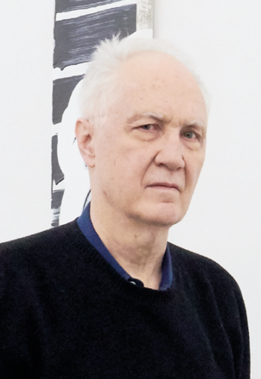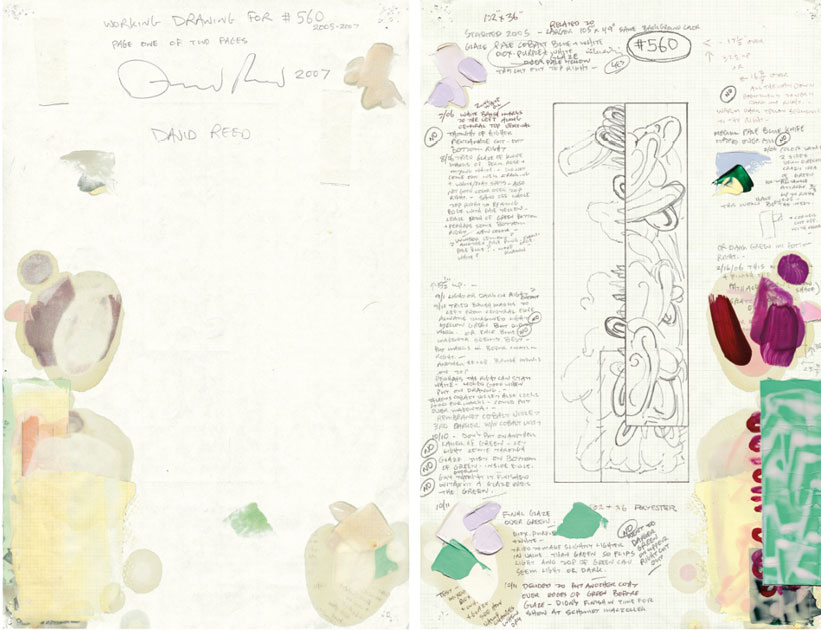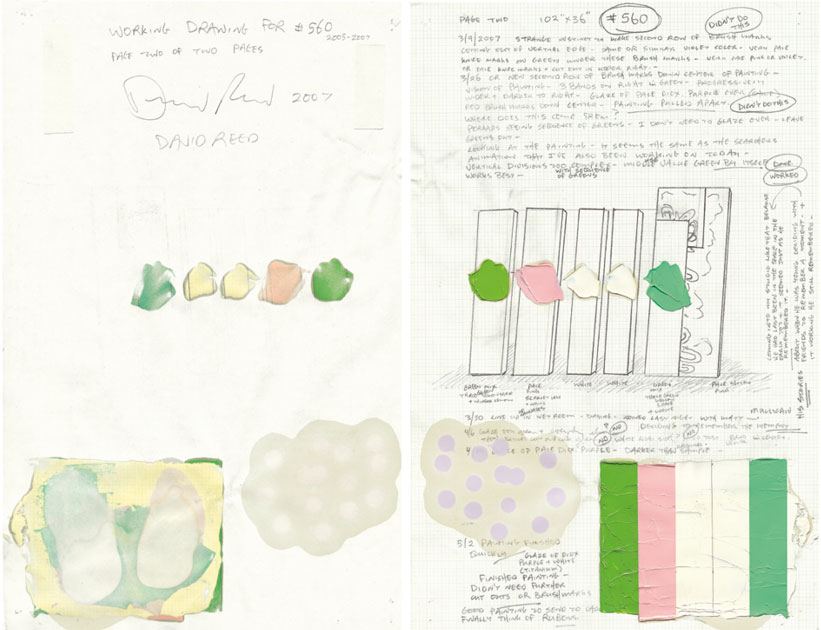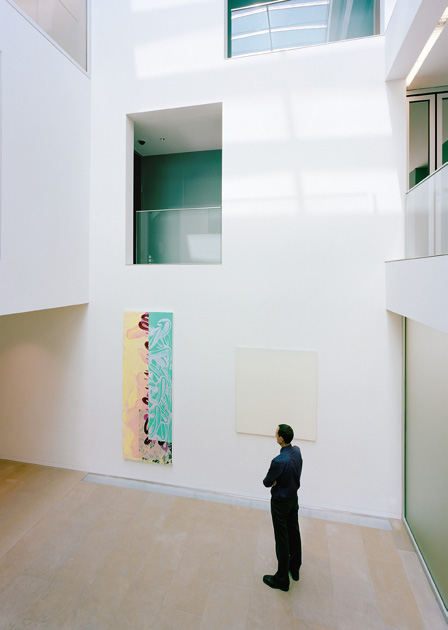David Reed
The New York artist David Reed often works with strong colour contrasts.
TEXT / Uwe Wieczorek
The work of the New York–based artist David Reed is influenced both by the style of abstract expressionism and by the creative means of film and photography. His paintings in the 1960s based on landscapes in the south-west of the United States, which shaped Reed’s idea of spatial vastness, draw their power from the impasto of the painting material, the vitality of the colour and the ductus of the brush. It is ultimately this ductus, the stroke of the brush as an elementary identification of painting, that Reed makes the sole subject of his paintings in the 1970s. In a thoroughly minimalist manner, he sets horizontal strokes with red or black paint in a vertical sequence on a white background. Irregular brushstrokes, running paint or splashes are not corrected or removed, but accepted as indications of a painter’s creativity. This simultaneously sensual-empirical and conceptual attitude is from then on inherent in all his paintings.
I hate the idea that painting should be timeless. This removes painting from our world.
While the severity of the paint application and the composition of the picture increases towards the end of the 1970s, the brushstrokes finally take on an almost baroque vibrancy in the 1980s. He forms mutually penetrating loops with a now three-dimensional effect in contrasting colours on a monochrome background, which often dominate the entire canvas. Here and there, they are overlaid with separate fields, themselves containing loops, whose strict orthogonality counteracts the image dynamics in an organising manner. The structure of the paint depends on whether Reed spreads it on the canvas with a brush or a squeegee, and is either striped or smooth. With a smooth structure, it appears strangely immaterial, as if it had been photographed and then mounted in the picture.
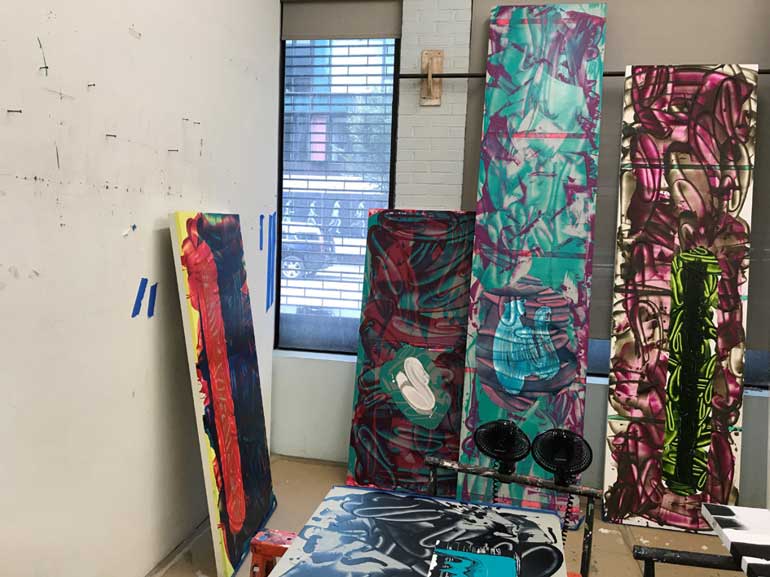
Image: reedstudio
The composition of the picture is subject to increasingly elaborate work processes, which are reflected upon by means of detailed drawings. The careful priming and painting, masking and layering, glazing and sanding, revising and reworking, and finding the final version often takes several years, as was the case with the work presented here, “#560”. Like almost all of the artist’s paintings, it derives its vitality from the asymmetry of the overlapping pictorial fields of different sizes, from the sweep of the brush and squeegee, from the alternation of partly glossy and partly matt surface areas, from the juxtaposition of surface and illusionistic space, and from the contrast of the colours. Above all, it is them, the colours as such, that David Reed is interested in. By his own admission, they are more important to him than anything else. He pays tribute to them through painting the shape of loops, which are nothing more than loops in the guise of painting.
